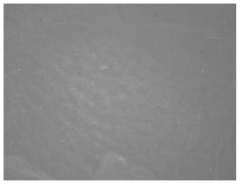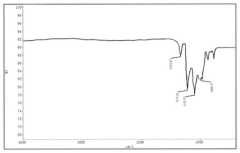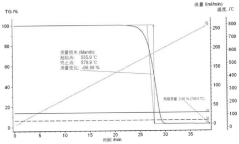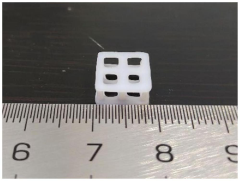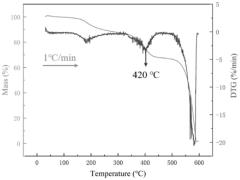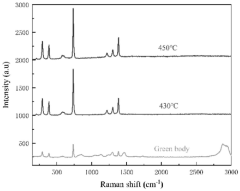How to Explore PTFE’s Use in Structural Applications?
JUN 27, 20259 MIN READ
Generate Your Research Report Instantly with AI Agent
Patsnap Eureka helps you evaluate technical feasibility & market potential.
PTFE Structural Applications: Background and Objectives
Polytetrafluoroethylene (PTFE), commonly known as Teflon, has been a revolutionary material since its accidental discovery in 1938. Initially prized for its non-stick properties and chemical resistance, PTFE's potential in structural applications has been an evolving area of interest. This exploration aims to expand the material's utility beyond its traditional roles in cookware and industrial coatings.
The journey of PTFE in structural applications began with recognizing its unique combination of properties: low friction coefficient, high temperature resistance, and excellent chemical inertness. These characteristics, while beneficial in many scenarios, presented challenges in structural use due to the material's inherent softness and tendency to creep under load. However, as engineering demands have grown more complex, the potential benefits of incorporating PTFE into structural designs have become increasingly apparent.
Recent technological advancements have opened new avenues for PTFE in load-bearing and structural roles. Innovations in material science have led to the development of PTFE composites and modified forms that enhance its mechanical properties while retaining its desirable characteristics. These developments have sparked interest across various industries, from aerospace to civil engineering, in leveraging PTFE's unique properties for structural applications.
The primary objective of exploring PTFE's use in structural applications is to harness its exceptional properties to solve complex engineering challenges. This includes developing lightweight yet durable structures, creating self-lubricating components for mechanical systems, and designing chemically resistant infrastructure for harsh environments. By integrating PTFE into structural designs, engineers aim to enhance performance, longevity, and efficiency across a wide range of applications.
Another crucial goal is to overcome the traditional limitations of PTFE in load-bearing scenarios. This involves researching and developing methods to improve its compressive strength, reduce creep, and enhance its bonding capabilities with other materials. The pursuit of these objectives has led to collaborative efforts between material scientists, engineers, and industry professionals, driving innovation in both material formulation and structural design methodologies.
As we delve deeper into PTFE's structural applications, it's essential to consider the broader implications of this research. The potential for PTFE to contribute to more sustainable and efficient structures aligns with global trends towards environmentally friendly and high-performance materials. This exploration not only seeks to expand the material's applications but also to contribute to the development of next-generation structural solutions that can address contemporary challenges in engineering and construction.
The journey of PTFE in structural applications began with recognizing its unique combination of properties: low friction coefficient, high temperature resistance, and excellent chemical inertness. These characteristics, while beneficial in many scenarios, presented challenges in structural use due to the material's inherent softness and tendency to creep under load. However, as engineering demands have grown more complex, the potential benefits of incorporating PTFE into structural designs have become increasingly apparent.
Recent technological advancements have opened new avenues for PTFE in load-bearing and structural roles. Innovations in material science have led to the development of PTFE composites and modified forms that enhance its mechanical properties while retaining its desirable characteristics. These developments have sparked interest across various industries, from aerospace to civil engineering, in leveraging PTFE's unique properties for structural applications.
The primary objective of exploring PTFE's use in structural applications is to harness its exceptional properties to solve complex engineering challenges. This includes developing lightweight yet durable structures, creating self-lubricating components for mechanical systems, and designing chemically resistant infrastructure for harsh environments. By integrating PTFE into structural designs, engineers aim to enhance performance, longevity, and efficiency across a wide range of applications.
Another crucial goal is to overcome the traditional limitations of PTFE in load-bearing scenarios. This involves researching and developing methods to improve its compressive strength, reduce creep, and enhance its bonding capabilities with other materials. The pursuit of these objectives has led to collaborative efforts between material scientists, engineers, and industry professionals, driving innovation in both material formulation and structural design methodologies.
As we delve deeper into PTFE's structural applications, it's essential to consider the broader implications of this research. The potential for PTFE to contribute to more sustainable and efficient structures aligns with global trends towards environmentally friendly and high-performance materials. This exploration not only seeks to expand the material's applications but also to contribute to the development of next-generation structural solutions that can address contemporary challenges in engineering and construction.
Market Analysis for PTFE in Construction
The construction industry has shown a growing interest in the use of Polytetrafluoroethylene (PTFE) for structural applications due to its unique properties and potential benefits. The market for PTFE in construction is experiencing steady growth, driven by the material's exceptional chemical resistance, low friction coefficient, and durability in harsh environments.
PTFE's market in construction is primarily segmented into roofing membranes, architectural fabrics, and coatings for structural components. The roofing membrane segment holds a significant market share, with PTFE-coated fiberglass fabrics being widely used in large-scale projects such as stadiums, airports, and commercial buildings. These membranes offer excellent weather resistance, longevity, and energy efficiency, contributing to their increasing adoption.
The architectural fabric segment is another key area of growth for PTFE in construction. PTFE-coated fabrics are used in tensile structures, facades, and canopies, providing architects with innovative design possibilities while ensuring durability and low maintenance. This segment is expected to witness substantial growth as the demand for lightweight, aesthetically pleasing, and sustainable building materials continues to rise.
In the coatings segment, PTFE is gaining traction for its ability to protect structural components from corrosion, chemical attack, and weathering. This application is particularly valuable in industrial and marine environments where structures are exposed to harsh conditions. The market for PTFE coatings in construction is projected to expand as infrastructure projects in challenging environments increase.
Geographically, North America and Europe currently dominate the PTFE construction market, owing to their advanced construction technologies and stringent building regulations. However, the Asia-Pacific region is emerging as a lucrative market, driven by rapid urbanization, increasing infrastructure investments, and growing awareness of sustainable building materials.
The market dynamics are influenced by factors such as the increasing focus on energy-efficient buildings, the need for durable and low-maintenance materials, and the growing trend of sustainable construction practices. PTFE's ability to contribute to these aspects positions it favorably in the construction materials market.
Despite its advantages, the high cost of PTFE compared to traditional construction materials remains a challenge for widespread adoption. However, as manufacturing processes improve and economies of scale are achieved, the cost-effectiveness of PTFE in long-term applications is becoming more apparent, potentially driving further market growth.
PTFE's market in construction is primarily segmented into roofing membranes, architectural fabrics, and coatings for structural components. The roofing membrane segment holds a significant market share, with PTFE-coated fiberglass fabrics being widely used in large-scale projects such as stadiums, airports, and commercial buildings. These membranes offer excellent weather resistance, longevity, and energy efficiency, contributing to their increasing adoption.
The architectural fabric segment is another key area of growth for PTFE in construction. PTFE-coated fabrics are used in tensile structures, facades, and canopies, providing architects with innovative design possibilities while ensuring durability and low maintenance. This segment is expected to witness substantial growth as the demand for lightweight, aesthetically pleasing, and sustainable building materials continues to rise.
In the coatings segment, PTFE is gaining traction for its ability to protect structural components from corrosion, chemical attack, and weathering. This application is particularly valuable in industrial and marine environments where structures are exposed to harsh conditions. The market for PTFE coatings in construction is projected to expand as infrastructure projects in challenging environments increase.
Geographically, North America and Europe currently dominate the PTFE construction market, owing to their advanced construction technologies and stringent building regulations. However, the Asia-Pacific region is emerging as a lucrative market, driven by rapid urbanization, increasing infrastructure investments, and growing awareness of sustainable building materials.
The market dynamics are influenced by factors such as the increasing focus on energy-efficient buildings, the need for durable and low-maintenance materials, and the growing trend of sustainable construction practices. PTFE's ability to contribute to these aspects positions it favorably in the construction materials market.
Despite its advantages, the high cost of PTFE compared to traditional construction materials remains a challenge for widespread adoption. However, as manufacturing processes improve and economies of scale are achieved, the cost-effectiveness of PTFE in long-term applications is becoming more apparent, potentially driving further market growth.
Current Challenges in PTFE Structural Use
Despite PTFE's unique properties, its application in structural components faces several significant challenges. The primary obstacle is PTFE's inherent low mechanical strength and stiffness compared to traditional structural materials like metals or reinforced polymers. This limitation restricts its use in load-bearing applications, where high strength-to-weight ratios are crucial.
Another major challenge is PTFE's creep behavior under sustained loads. Even at room temperature, PTFE exhibits a tendency to deform permanently over time when subjected to constant stress. This characteristic makes it difficult to maintain dimensional stability in structural applications, potentially compromising the integrity and performance of the overall structure.
The thermal expansion of PTFE presents additional complications in structural use. Its coefficient of thermal expansion is significantly higher than that of most metals and other structural materials. This mismatch can lead to thermal stress and potential failure in composite structures or joints where PTFE is used in conjunction with other materials.
PTFE's poor adhesion properties, while beneficial in some applications, pose challenges in structural bonding. The material's low surface energy makes it difficult to achieve strong, durable bonds with other materials or even with itself. This limitation complicates the integration of PTFE components into larger structural assemblies.
The manufacturing and processing of PTFE for structural applications also present hurdles. Traditional fabrication methods used for other polymers, such as injection molding, are not suitable for PTFE due to its high melting point and unique rheological properties. This necessitates specialized and often more costly manufacturing techniques, limiting the complexity and scale of PTFE structural components.
Furthermore, the long-term durability and aging characteristics of PTFE in structural applications are not fully understood. While PTFE is known for its chemical inertness, its behavior under prolonged exposure to various environmental conditions, UV radiation, and mechanical stresses in structural contexts requires further investigation.
Lastly, the relatively high cost of PTFE compared to other structural materials poses an economic challenge. The material's price, combined with the specialized processing requirements, can make PTFE-based structural solutions less cost-effective, particularly for large-scale applications or in price-sensitive markets.
Another major challenge is PTFE's creep behavior under sustained loads. Even at room temperature, PTFE exhibits a tendency to deform permanently over time when subjected to constant stress. This characteristic makes it difficult to maintain dimensional stability in structural applications, potentially compromising the integrity and performance of the overall structure.
The thermal expansion of PTFE presents additional complications in structural use. Its coefficient of thermal expansion is significantly higher than that of most metals and other structural materials. This mismatch can lead to thermal stress and potential failure in composite structures or joints where PTFE is used in conjunction with other materials.
PTFE's poor adhesion properties, while beneficial in some applications, pose challenges in structural bonding. The material's low surface energy makes it difficult to achieve strong, durable bonds with other materials or even with itself. This limitation complicates the integration of PTFE components into larger structural assemblies.
The manufacturing and processing of PTFE for structural applications also present hurdles. Traditional fabrication methods used for other polymers, such as injection molding, are not suitable for PTFE due to its high melting point and unique rheological properties. This necessitates specialized and often more costly manufacturing techniques, limiting the complexity and scale of PTFE structural components.
Furthermore, the long-term durability and aging characteristics of PTFE in structural applications are not fully understood. While PTFE is known for its chemical inertness, its behavior under prolonged exposure to various environmental conditions, UV radiation, and mechanical stresses in structural contexts requires further investigation.
Lastly, the relatively high cost of PTFE compared to other structural materials poses an economic challenge. The material's price, combined with the specialized processing requirements, can make PTFE-based structural solutions less cost-effective, particularly for large-scale applications or in price-sensitive markets.
Existing PTFE Structural Solutions
01 PTFE manufacturing and processing methods
Various techniques for manufacturing and processing PTFE are described, including methods for producing PTFE powders, films, and fibers. These processes often involve specific temperature and pressure conditions, as well as the use of specialized equipment to achieve desired properties in the final PTFE product.- PTFE manufacturing processes: Various methods for producing PTFE are described, including polymerization techniques, extrusion processes, and molding methods. These processes aim to improve the quality, efficiency, and properties of the resulting PTFE products.
- PTFE composite materials: PTFE is often combined with other materials to create composite products with enhanced properties. These composites may include fillers, reinforcing agents, or other polymers to improve mechanical strength, wear resistance, or thermal conductivity.
- Surface modification of PTFE: Techniques for modifying the surface of PTFE materials are explored to enhance properties such as adhesion, wettability, or biocompatibility. These modifications may involve chemical treatments, plasma processing, or the application of coatings.
- PTFE in membrane technology: PTFE is widely used in membrane applications due to its chemical resistance and non-stick properties. Innovations in this area focus on improving membrane performance, durability, and selectivity for various separation processes.
- PTFE recycling and environmental considerations: Methods for recycling PTFE products and reducing environmental impact are developed. These include techniques for breaking down PTFE, reprocessing waste materials, and creating more sustainable manufacturing processes.
02 PTFE composites and blends
PTFE is often combined with other materials to create composites or blends with enhanced properties. These combinations can improve characteristics such as wear resistance, thermal conductivity, or mechanical strength. The resulting materials find applications in various industries, including automotive, aerospace, and electronics.Expand Specific Solutions03 Surface modification of PTFE
Techniques for modifying the surface of PTFE are explored to enhance its properties or compatibility with other materials. These methods may include chemical treatments, plasma treatments, or the application of coatings to improve adhesion, wettability, or other surface characteristics of PTFE.Expand Specific Solutions04 PTFE in membrane and filtration applications
PTFE is widely used in membrane and filtration technologies due to its chemical resistance and non-stick properties. Applications include water treatment, gas separation, and industrial filtration. The development of porous PTFE membranes with specific pore sizes and structures is a key focus in this area.Expand Specific Solutions05 PTFE in medical and biomedical applications
The use of PTFE in medical and biomedical fields is explored, including applications in implants, surgical instruments, and drug delivery systems. Research focuses on improving biocompatibility, reducing friction in medical devices, and developing PTFE-based materials with antimicrobial properties.Expand Specific Solutions
Key Players in PTFE Manufacturing
The exploration of PTFE's use in structural applications is in a nascent stage, with the market still developing and relatively small. The technology's maturity is low to moderate, as companies are actively researching and innovating in this area. Key players like W. L. Gore & Associates and DuPont Safety & Construction are leading the charge, leveraging their expertise in PTFE materials. Academic institutions such as Zhejiang University and Qingdao University are contributing to fundamental research. Industrial giants like AGC, Inc. and DAIKIN INDUSTRIES Ltd. are also exploring potential applications, indicating growing interest from diverse sectors. As the technology evolves, we can expect increased market growth and more widespread adoption of PTFE in structural applications.
AGC, Inc. (Japan)
Technical Solution: AGC has made significant strides in exploring PTFE's use in structural applications, particularly focusing on fluoropolymer composites and modified PTFE materials. The company has developed a range of PTFE products under its Fluon® brand, specifically engineered for enhanced mechanical properties. AGC's approach involves the modification of PTFE's molecular structure and the incorporation of reinforcing agents to improve its load-bearing capabilities and dimensional stability. Their research has led to the creation of PTFE grades with superior creep resistance and higher compressive strength, making them suitable for structural components in demanding industrial environments[8]. AGC has also developed PTFE-based composite materials that combine the polymer's chemical inertness with improved rigidity and impact resistance, expanding its potential in structural applications such as chemical processing equipment, semiconductor manufacturing tools, and automotive components[9].
Strengths: Strong focus on industrial applications, wide range of modified PTFE grades, and expertise in fluoropolymer technology. Weaknesses: Potential limitations in extreme temperature applications and possible trade-offs between enhanced mechanical properties and PTFE's inherent low friction characteristics.
DAIKIN INDUSTRIES Ltd.
Technical Solution: Daikin Industries has focused on developing high-performance PTFE resins and compounds specifically tailored for structural applications. Their approach involves modifying PTFE's molecular structure and incorporating reinforcing agents to enhance its mechanical properties. Daikin has introduced a range of PTFE grades with improved creep resistance, wear resistance, and dimensional stability, making them suitable for load-bearing components in various industries. The company's research has led to the development of PTFE composites that incorporate fillers such as glass fibers, carbon fibers, and mineral particles, significantly improving the material's compressive strength and stiffness[4]. These advanced PTFE materials have found applications in automotive components, industrial machinery, and chemical processing equipment where structural integrity under harsh conditions is crucial[5].
Strengths: Wide range of tailored PTFE grades for specific structural requirements, excellent chemical resistance combined with improved mechanical properties. Weaknesses: Potential trade-offs between enhanced mechanical properties and some of PTFE's inherent characteristics like low friction.
Innovative PTFE Structural Technologies
A kind of PTFE-PFA composite material and preparation method thereof
PatentActiveCN115627041B
Innovation
- Using the preparation method of PTFE-PFA composite materials, the inorganic silicon filler is modified through coupling modification liquid to ensure its dispersion and compatibility, forming a cross-linked network to improve the mechanical properties, and through a specific proportion of KH560 and FTDS coupling agent forms a three-dimensional cross-linked network structure to improve the thermodynamic properties of composite materials.
3D printing preparation method of polytetrafluoroethylene high-performance lattice structure
PatentPendingCN118219579A
Innovation
- Using light-curing 3D printing technology combined with Creo software to design the lattice structure, using materials such as polytetrafluoroethylene dispersion, cross-linking agent, photosensitive resin monomer and photoinitiator, and improving mechanics through multi-stage heat treatment (degreasing, sintering, recrystallization) performance, reduce the heat treatment temperature of the blank, and enhance printing accuracy and size control.
Environmental Impact of PTFE Use
The environmental impact of PTFE use in structural applications is a critical consideration that requires thorough examination. PTFE, or polytetrafluoroethylene, is known for its exceptional chemical resistance and low friction properties, making it an attractive material for various structural applications. However, its environmental footprint throughout its lifecycle must be carefully evaluated.
During the production phase, the manufacturing of PTFE involves the use of fluoropolymers, which can contribute to greenhouse gas emissions. The process requires significant energy input, potentially leading to increased carbon dioxide emissions if not managed sustainably. Additionally, the production of PTFE may involve the use of perfluorooctanoic acid (PFOA), a persistent organic pollutant that has raised environmental concerns due to its potential for bioaccumulation and long-term environmental persistence.
In its application phase, PTFE's durability and resistance to degradation can be viewed as both an advantage and a potential environmental concern. While its longevity reduces the need for frequent replacements, thus conserving resources, it also means that PTFE products can persist in the environment for extended periods if not properly disposed of or recycled.
The disposal and end-of-life management of PTFE products present significant challenges. PTFE is not biodegradable and can persist in landfills for centuries. Incineration of PTFE waste can release harmful substances, including hydrogen fluoride and other toxic compounds, necessitating specialized disposal methods to mitigate environmental risks.
However, recent advancements in recycling technologies offer promising solutions for reducing the environmental impact of PTFE. Mechanical recycling methods can process PTFE scrap into reusable forms, while chemical recycling techniques are being developed to break down PTFE into its constituent monomers for reuse in new products. These recycling efforts can significantly reduce the material's overall environmental footprint.
In structural applications, the use of PTFE can indirectly contribute to environmental benefits. Its low friction properties can enhance energy efficiency in mechanical systems, potentially reducing overall energy consumption. Moreover, PTFE's resistance to corrosion and chemicals can extend the lifespan of structures, reducing the need for replacements and associated resource consumption.
To mitigate the environmental impact of PTFE use in structural applications, several strategies can be employed. These include optimizing production processes to reduce emissions, developing safer alternatives to PFOA in manufacturing, implementing efficient recycling programs, and designing products with end-of-life considerations in mind. Additionally, ongoing research into bio-based alternatives and more environmentally friendly fluoropolymers may provide future solutions for reducing the ecological footprint of PTFE-like materials in structural applications.
During the production phase, the manufacturing of PTFE involves the use of fluoropolymers, which can contribute to greenhouse gas emissions. The process requires significant energy input, potentially leading to increased carbon dioxide emissions if not managed sustainably. Additionally, the production of PTFE may involve the use of perfluorooctanoic acid (PFOA), a persistent organic pollutant that has raised environmental concerns due to its potential for bioaccumulation and long-term environmental persistence.
In its application phase, PTFE's durability and resistance to degradation can be viewed as both an advantage and a potential environmental concern. While its longevity reduces the need for frequent replacements, thus conserving resources, it also means that PTFE products can persist in the environment for extended periods if not properly disposed of or recycled.
The disposal and end-of-life management of PTFE products present significant challenges. PTFE is not biodegradable and can persist in landfills for centuries. Incineration of PTFE waste can release harmful substances, including hydrogen fluoride and other toxic compounds, necessitating specialized disposal methods to mitigate environmental risks.
However, recent advancements in recycling technologies offer promising solutions for reducing the environmental impact of PTFE. Mechanical recycling methods can process PTFE scrap into reusable forms, while chemical recycling techniques are being developed to break down PTFE into its constituent monomers for reuse in new products. These recycling efforts can significantly reduce the material's overall environmental footprint.
In structural applications, the use of PTFE can indirectly contribute to environmental benefits. Its low friction properties can enhance energy efficiency in mechanical systems, potentially reducing overall energy consumption. Moreover, PTFE's resistance to corrosion and chemicals can extend the lifespan of structures, reducing the need for replacements and associated resource consumption.
To mitigate the environmental impact of PTFE use in structural applications, several strategies can be employed. These include optimizing production processes to reduce emissions, developing safer alternatives to PFOA in manufacturing, implementing efficient recycling programs, and designing products with end-of-life considerations in mind. Additionally, ongoing research into bio-based alternatives and more environmentally friendly fluoropolymers may provide future solutions for reducing the ecological footprint of PTFE-like materials in structural applications.
PTFE Structural Standards and Regulations
The exploration of PTFE's use in structural applications necessitates a comprehensive understanding of the relevant standards and regulations governing its implementation. These guidelines are crucial for ensuring the safety, reliability, and performance of PTFE-based structural components.
In the United States, the American Society for Testing and Materials (ASTM) has developed several standards specifically for PTFE in structural applications. ASTM D4894 and D4895 provide specifications for molded and ram extruded PTFE materials, respectively. These standards outline the physical properties, mechanical characteristics, and testing methods required for PTFE used in structural components.
The International Organization for Standardization (ISO) has also established standards relevant to PTFE in structural applications. ISO 13000 series, particularly ISO 13000-1 and ISO 13000-2, provide specifications for PTFE semi-finished products and basic shapes. These standards ensure consistency in material quality and performance across international markets.
In Europe, the European Committee for Standardization (CEN) has developed EN 1337-7, which specifically addresses the use of PTFE in structural bearings. This standard provides guidelines for the design, testing, and installation of PTFE-based bearing elements in bridges and buildings.
Regulatory bodies such as the Federal Highway Administration (FHWA) in the United States have issued guidelines for the use of PTFE in bridge bearings. These guidelines outline the design considerations, material specifications, and performance requirements for PTFE-based bearing systems in bridge structures.
The building codes in various countries also play a crucial role in regulating the use of PTFE in structural applications. For instance, the International Building Code (IBC) and the Eurocode provide provisions for the use of non-traditional materials like PTFE in building structures, specifying requirements for fire resistance, durability, and structural integrity.
Environmental regulations also impact the use of PTFE in structural applications. The European Union's REACH (Registration, Evaluation, Authorization and Restriction of Chemicals) regulation and similar regulations in other regions impose restrictions on certain chemicals used in PTFE production, influencing material formulations and manufacturing processes.
As the use of PTFE in structural applications continues to evolve, new standards and regulations are being developed to address emerging challenges and opportunities. For instance, efforts are underway to establish standards for 3D-printed PTFE components in structural applications, reflecting the growing interest in additive manufacturing techniques for producing complex PTFE-based structural elements.
In the United States, the American Society for Testing and Materials (ASTM) has developed several standards specifically for PTFE in structural applications. ASTM D4894 and D4895 provide specifications for molded and ram extruded PTFE materials, respectively. These standards outline the physical properties, mechanical characteristics, and testing methods required for PTFE used in structural components.
The International Organization for Standardization (ISO) has also established standards relevant to PTFE in structural applications. ISO 13000 series, particularly ISO 13000-1 and ISO 13000-2, provide specifications for PTFE semi-finished products and basic shapes. These standards ensure consistency in material quality and performance across international markets.
In Europe, the European Committee for Standardization (CEN) has developed EN 1337-7, which specifically addresses the use of PTFE in structural bearings. This standard provides guidelines for the design, testing, and installation of PTFE-based bearing elements in bridges and buildings.
Regulatory bodies such as the Federal Highway Administration (FHWA) in the United States have issued guidelines for the use of PTFE in bridge bearings. These guidelines outline the design considerations, material specifications, and performance requirements for PTFE-based bearing systems in bridge structures.
The building codes in various countries also play a crucial role in regulating the use of PTFE in structural applications. For instance, the International Building Code (IBC) and the Eurocode provide provisions for the use of non-traditional materials like PTFE in building structures, specifying requirements for fire resistance, durability, and structural integrity.
Environmental regulations also impact the use of PTFE in structural applications. The European Union's REACH (Registration, Evaluation, Authorization and Restriction of Chemicals) regulation and similar regulations in other regions impose restrictions on certain chemicals used in PTFE production, influencing material formulations and manufacturing processes.
As the use of PTFE in structural applications continues to evolve, new standards and regulations are being developed to address emerging challenges and opportunities. For instance, efforts are underway to establish standards for 3D-printed PTFE components in structural applications, reflecting the growing interest in additive manufacturing techniques for producing complex PTFE-based structural elements.
Unlock deeper insights with Patsnap Eureka Quick Research — get a full tech report to explore trends and direct your research. Try now!
Generate Your Research Report Instantly with AI Agent
Supercharge your innovation with Patsnap Eureka AI Agent Platform!

